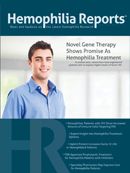Otezla by Celgene
On March 21, 2014, the US Food and Drug Administration announced the approval of Celgene Corporation's Otezla (apremilast), an oral tablet indicated to treat active psoriatic arthritis in adults. Otezla has a single contraindication: known hypersensitivity to the active ingredient or any excipients in Otezla tablets.

On March 21, 2014, the US Food and Drug Administration announced the approval of Celgene Corporation’s Otezla (apremilast), an oral tablet indicated to treat active psoriatic arthritis in adults. Otezla has a single contraindication: known hypersensitivity to the active ingredient or any excipients in Otezla tablets.1,2
Pharmacology and Pharmacokinetics Otezla inhibits the enzyme phosphodiesterase 4 (PDE4), thereby increasing the level of cyclic adenosine monophosphate (cAMP) inside cells. Although this pharmacologic effect is known, the way in which PDE4 inhibition improves therapeutic outcomes in patients with psoriatic arthritis remains unknown.2
Following oral administration, peak plasma concentrations of Otezla are reached within approximately 2.5 hours. Otezla then undergoes oxidative metabolism through cytochrome P450 enzymes (mostly by CYP3A4, with some metabolism by CYP1A2 and CYP2A6), glucuronidation, and hydrolytic breakdown. The net result is an elimination half-life of 6 to 9 hours. In studies with radiolabeled Otezla, the largest proportion of each dose was excreted in urine.2
Dosage and Administration
Tablets, which are supplied in 10-mg, 20-mg, and 30-mg strengths, may be taken with or without food, although tablets should not be crushed, chewed, or split.2
When twice-daily administration of Otezla begins, dosage titration occurs over a 5-day period, starting at 10 mg on day 1, and increasing by 10 mg daily until the full dose of 60 mg daily is reached on day 6 (ie, 10 mg on day 1, 20 mg on day 2, 30 mg on day 3, 40 mg on day 4, 50 mg on day 5, and 60 mg onday 6 and thereafter). Daily doses should be divided into morning and evening doses, as detailed in the package insert.2
In patients with severe renal impairment (creatinine clearance <30 mL/min), the maintenance dose should be reduced by 50% to a total of 30 mg daily and the titration should be adjusted to include only the morning doses of Otezla over the 5-day titration period (ie, 10 mg on day 1, 10 mg on day 2, 10 mg on day 3, 20 mg on day 4, 20 mg on day 5, and 30 mg on day 6 and thereafter). Patients with mild or severe hepatic impairment do not require a dosage adjustment.2
Clinical Trials
In 3 multicenter, randomized, double-blind, placebo- controlled clinical trials, 1493 adult patients with a minimum of a 6-month history of psoriatic arthritis, at least 3 swollen joints, and at least 3 tender joints despite alternate disease-modifying antirheumatic drug therapy received treatment with Otezla. In addition, all patients had at least 1 psoriatic lesion at least 2 cm in diameter.2 Patients taking stable, low doses of methotrexate, sulfasalazine, leflunomide, nonsteroidal anti-inflammatory drugs (NSAIDs), and corticosteroids were not excluded from the trials. In addition, patients who had previously used biologic tumor necrosis factor inhibitors were allowed in the trials.2
Investigators evaluated the percentage of patients achieving a therapeutic response, which is defined as a 20% improvement in the American College of Rheumatology 20 criteria. Although the trial lasted 24 weeks, the primary end point was measured at week 16. Responses at week 16 occurred in 38% versus 19% of patients in study 1, 32% versus 19% of patients in study 2, and 41% versus 18% of patients in study 3. In all 3 cases, the results show a significant advantage with Otezla over other therapies (P <.05 for all 3 comparisons).2
Adverse Events
Common adverse events (AEs) with Otezla included diarrhea, nausea, and headache, each of which occurred in 5% of patients or more. Less common AEs included upper respiratory tract infection, vomiting, nasopharyngitis, and upper abdominal pain. For a complete discussion of potential adverse events and drug interactions, warnings, and precautions please consult the product package insert.2
